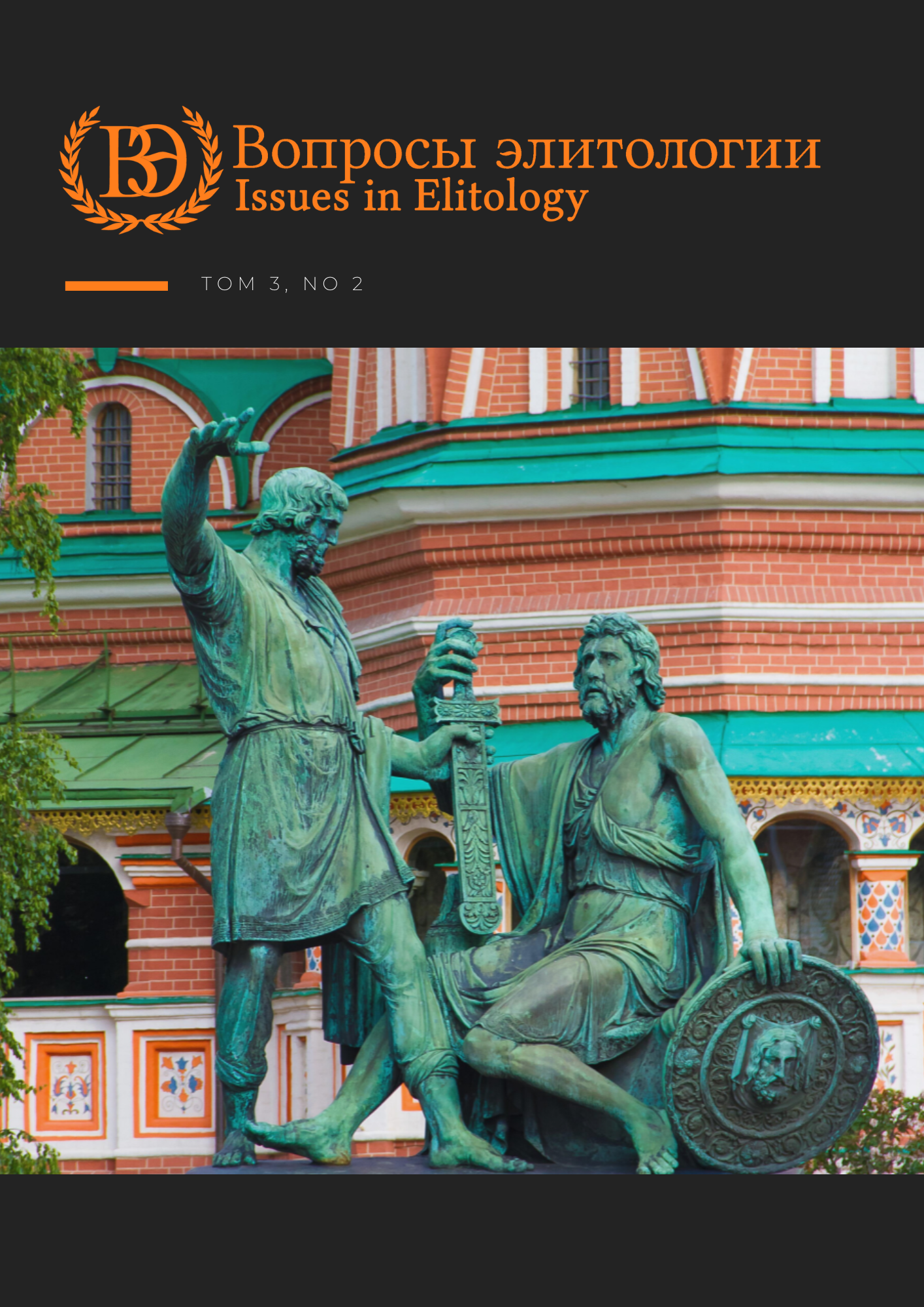Abstract
The article considers historical memory as the basis of collective identity, which is constructed through «images of the past» associated with historically significant events. The role of «images of the past» in the consolidation of society is evaluated. The authors consider models of historical memory characteristic of various social groups, namely: Soviet, post-Soviet, «elite» and «Russophile». It is noted that one of the most significant events in history, capable of consolidating Russians, is the Great Patriotic War and Victory in it. Using the example of this event, the process of constructing and mobilizing historical memory in modern conditions of the political process, which has the latest mechanisms of symbolic struggle for the meanings and meanings of our history, is examined. The social media analysis carried out by uploading and analyzing social media messages is presented. The article also examines the current stage of the formation of historical memory, which manifested itself through the perception of a special military operation in Ukraine. The analysis of the reactions of young people to the special operation is given, confirming the hypothesis that the attitude towards it is formed by the existing attitudes in the youth consciousness
References
Berger P., & Luckman, T. (1995).Social construction of reality. Penguin Books
Borgatti, S. P., & Everett, M. G. (2006).A Graph-theoretic perspective on Centrality. Social Networks, 28, 466-484. doi: 10.1016/j.socnet.2005.11.005
Castells, M. (2009). The Rise of the Network Society, The Information Age: Economy, Society and Culture (Vols. 1 - 3). Blackwell.
Dalton, R. G. (1977). Economic Anthropology. American Behavioral Scientist, 20, 635-656. doi: 10.1177/000276427702000504
Drobizheva, L. M. (2008). National, civic and ethnic identity: problems of positive compatibility. doi:10.15405/ejsbs.294 eISSN: 2301-2218 (in Russian).
Durkheim, E. (2006). Sociology. Its subject, method and purpose. Canon.
Erickson, E. (1996). Identity: adolescence and crisis. Progress.
Goldstone, J. A. (1991).Revolution and Rebellion in the Early Modern World. University of California Press
Gradoselskaya, G. V. (2004). Network Dimensions in Sociology: A Study Guide. Novy Uchebnik.
Gubanov, D. A., Novikov, D. A., & Chkhartishvili, A. G. (2009). Models of Influence In Social Media. Retrieved from ResearchGate website: https://www.researchgate.net/profile/Dmitry_Novikov5/publication/ 274390365_Modeli_vliania_v_socialnyh_setah/links/55900ad908ae15962d8c3dvlian/ Modelidf
Howard, P. N., & Parks, M. R. (2012). Social Media and Political Change: Capacity, Constraint and Consequence, Journal of Communication, 62, 359-362. doi: 10.1111/j.1460-2466.2012.01626.x
Interethnic and interreligious harmony in the student environment of Crimea and Sevastopol: monitoring and analysis of the level of development: a collective monograph.(2019) Ministry of Science and Higher Education of the Russian Federation, Sevastopol State University. Sevastopol (in Russian).
Kuikka, V. (2018). Influence spreading model used to analyze social networks and detect subcommunities. Comput SocNetw, 5. doi: 10.1186/s40649-018-0060-z
Laclau, E., &Mouffe, C. (1985). Hegemony and Socialist Strategy: To-wards a Radical Democratic Politics. Verso.
Le Bon, G. (1995). Psychology of Peoples and Crowds. «Maket».
Lippmann, W. (2004).Public opinion. Dover Publications.
Marcuse, H. (1994). One-dimensional person. REFL-Books.
McLuhan, M. (2007).Understanding Media: The Extensions of Man. KuchkovoPole.
Mead, G. H. (1925). Genesis of Self and Social Control. International Journal of Ethics, 35, 251-277.
Shestopal, E. B., Smulkina, N. V., & Morozikova, I. V. (2019). Comparative analysis of the images of their country among residents of Russian regions. Comparative politics, 10(3), 74-94. doi: 10.24411/2221-3279-2019-10031
Smorgunov, L. V., & Sherstobitov, A.S. (2014). Political Networks: Theory and Methods of Analysis. Aspekt-Press.
Teun, V. D. (1998). Ideology: A Multidisciplinary Approach. Sage.
Uznadze, D. N. (2001).Psychology of attitudes. Piter.
Vodenko K. V., Labadze O. E., TikhonovskovaM. P. (2020) Historical memory in the processes of political modernization of polyethnic society.Philosophy. Series: Cognition (12), 166-171. doi: 10.37882/2500-3682.2020.12.08 (In Russian).
Wang, H., Wang, F., & Xu, K. (2020) Modeling Information Diffusion in Online Social Networks with Partial Differential Equations. Re-trieved from Springer website: https://www.springer.com/gp/book/ 9783030388508
Yarmak O.V., Bolshakova M.G., Maranchak A.G. (2021) Collective memory of the Great Patriotic War as a network in the understanding of actor-network theory. MODERN SCIENCE (7), 269-271. ISSN: 2414-9918 (in Russian).
Yarmak O. V., Bolshakova M. G., Savina Z. S. (2021) Sevastopol in the construction of collective historical memory: analysis of Runet information flows using big data. Kant Magazine (2)(39), 285-292 doi: 10.24923/2222-243X.2021-39.48 (in Russian).
Zaslasvskaya, T. I. (2002). Societal Transformation of Russian Society: Activity-Structural Concept. Delo.

This work is licensed under a Creative Commons Attribution 4.0 International License.


